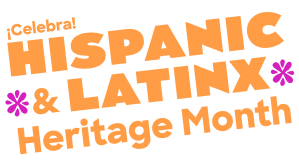Celebrate Black Teachers and Students
This project is part of the Black History Month celebration because it supports a Black teacher or a school where the majority of the students are Black.
Your web browser might not work well with our site. We recommend you upgrade your browser.
Ms. Garrott from La Quinta, CA is requesting educational kits & games through DonorsChoose, the most trusted classroom funding site for teachers.
See what Ms. Garrott is requestingHelp me give my students algebra tiles so we can learn all about polynomials in a kinesthetic way.

This project is a part of the Hispanic & Latinx Heritage Month celebration because it supports a Latino teacher or a school where the majority of students are Latino.
This project is part of the Black History Month celebration because it supports a Black teacher or a school where the majority of the students are Black.
I teach math to 9th and 10th-grade students. Much of what I teach is difficult to directly connect to the real world so whenever we have an opportunity to physically see how math works I like to take the time for them to experience it. Help me give my students algebra tiles so we can learn about polynomials in a kinesthetic way.
These days students are so completely absorbed in virtual worlds that they often do not have enough experience in the physical world to imagine how things go together.
Many of my students have not had enough time playing with things like Legos or building blocks to build a strong sense of spatial relationships. Having hands-on manipulatives available in the classroom has become an essential part of teaching students who spend too much time looking at screens. I use algebra tiles when introducing the distributive property and its inverse factoring. Being able to build rectangles and see how many different arrangements you can make with a set of tiles gives struggling students a connection between multiplication and division. This allows them to continue their study of more advanced algebraic concepts while strengthening their basic math skills.
We currently have access to virtual tiles, but for many of my students, there is greater power in being able to touch and manipulate items with their hands. I tried making my own algebra tiles out of cardstock, but between copying and cutting them out, they are often the wrong sizes and can lead to mathematical misconceptions. Cardstock tiles are still better for most students than using online virtual tiles. The tiles make factoring accessible to students who struggle with basic math facts as well.
You donate directly to the teacher or project you care about and see where every dollar you give goes.
Expand the "Where your donation goes" section below to see exactly what Ms. Garrott is requesting.
See our financesYou can start a project with the same resources being requested here!
Find opportunities to impact local needs by exploring a map of classroom projects near you.
See local area